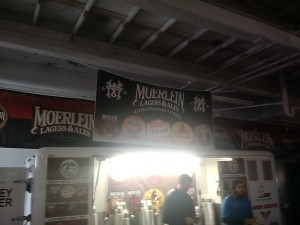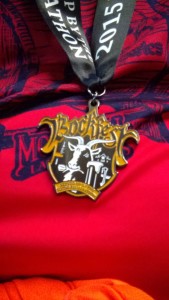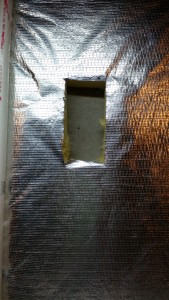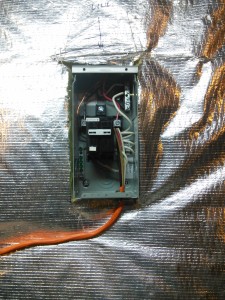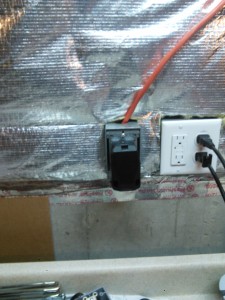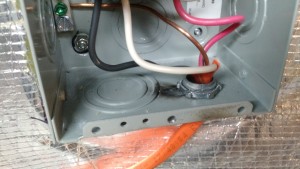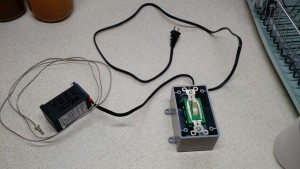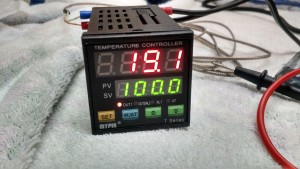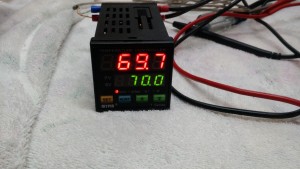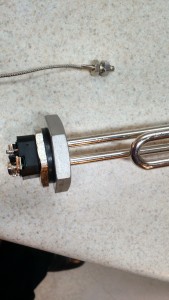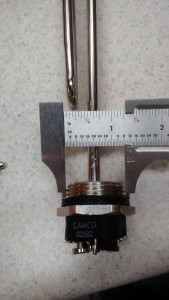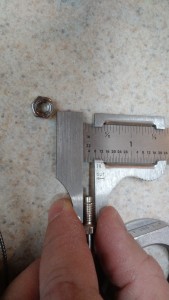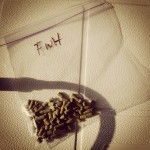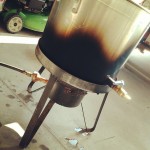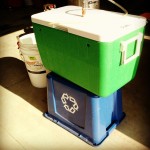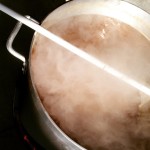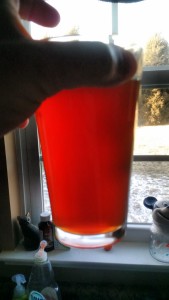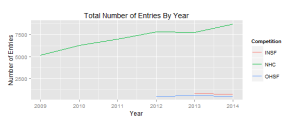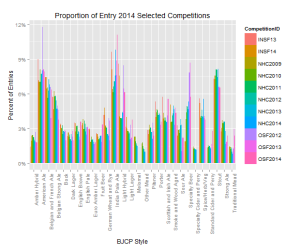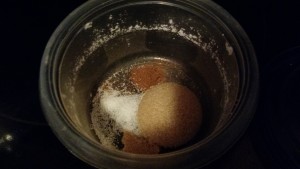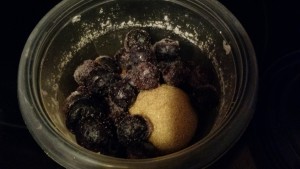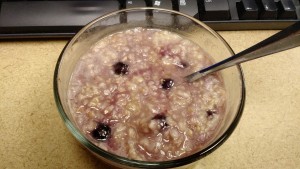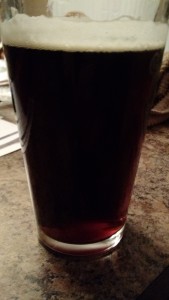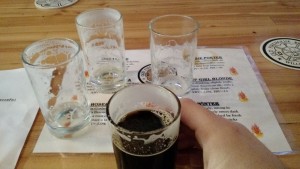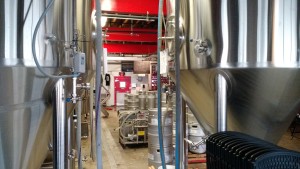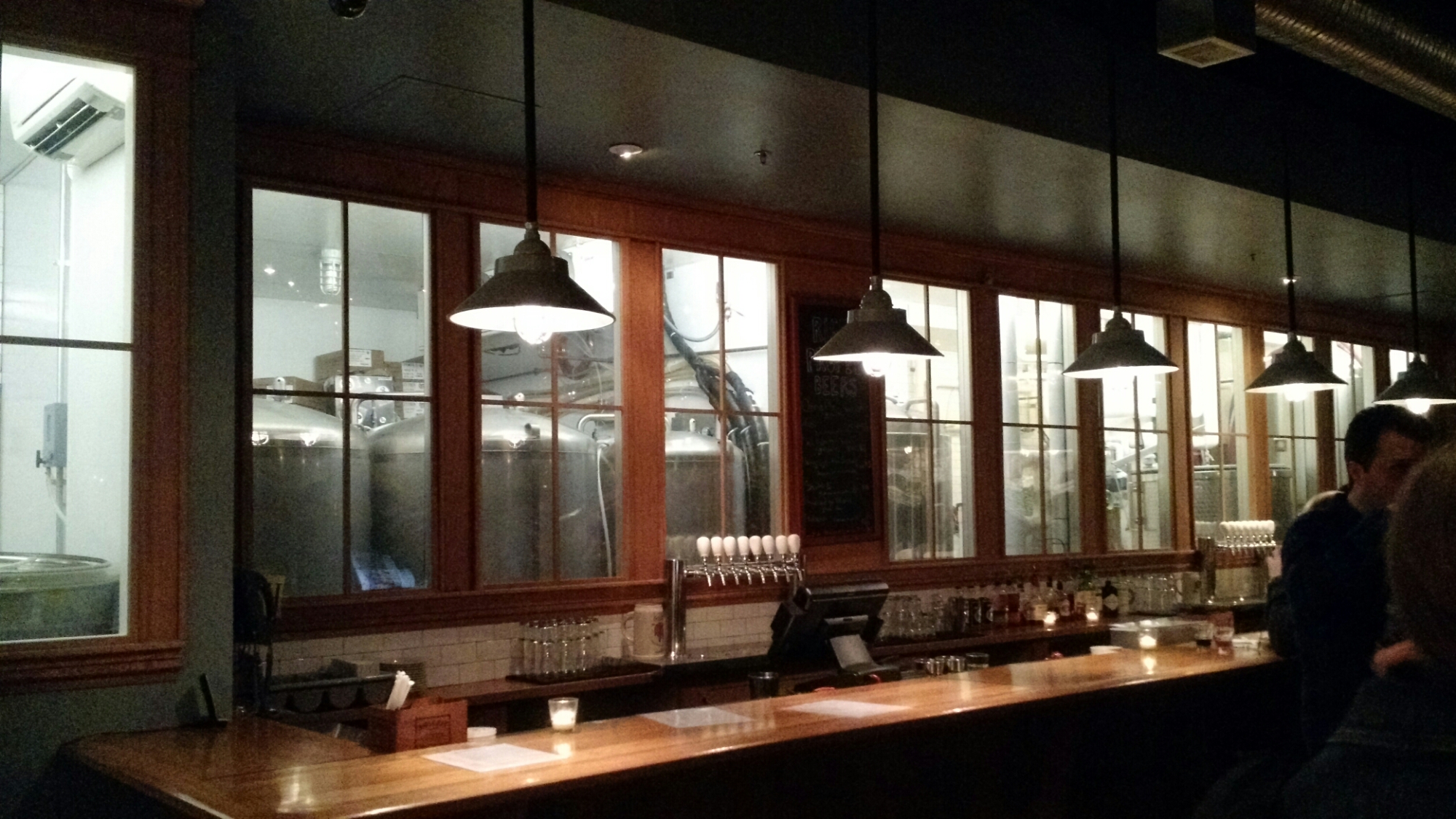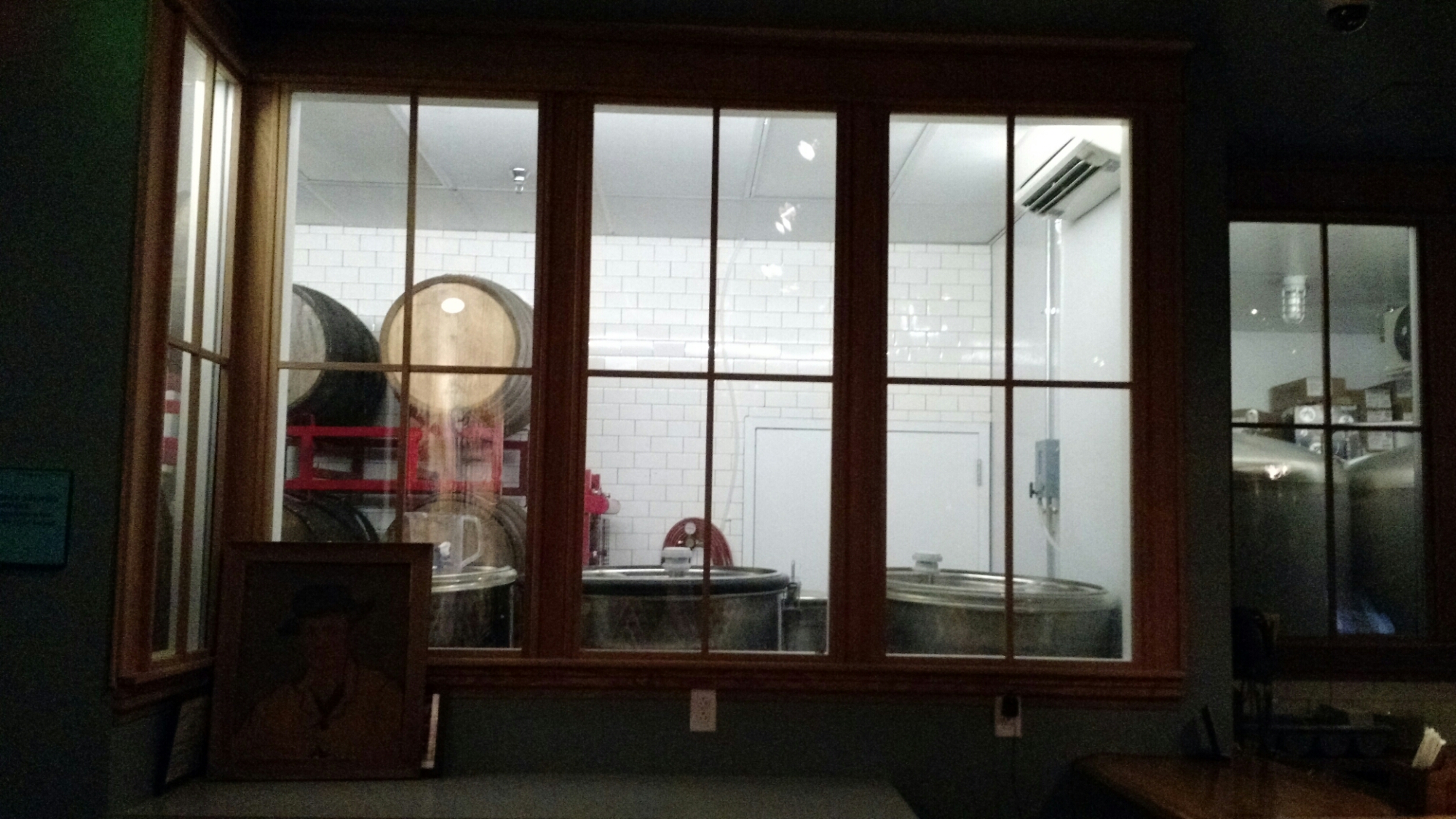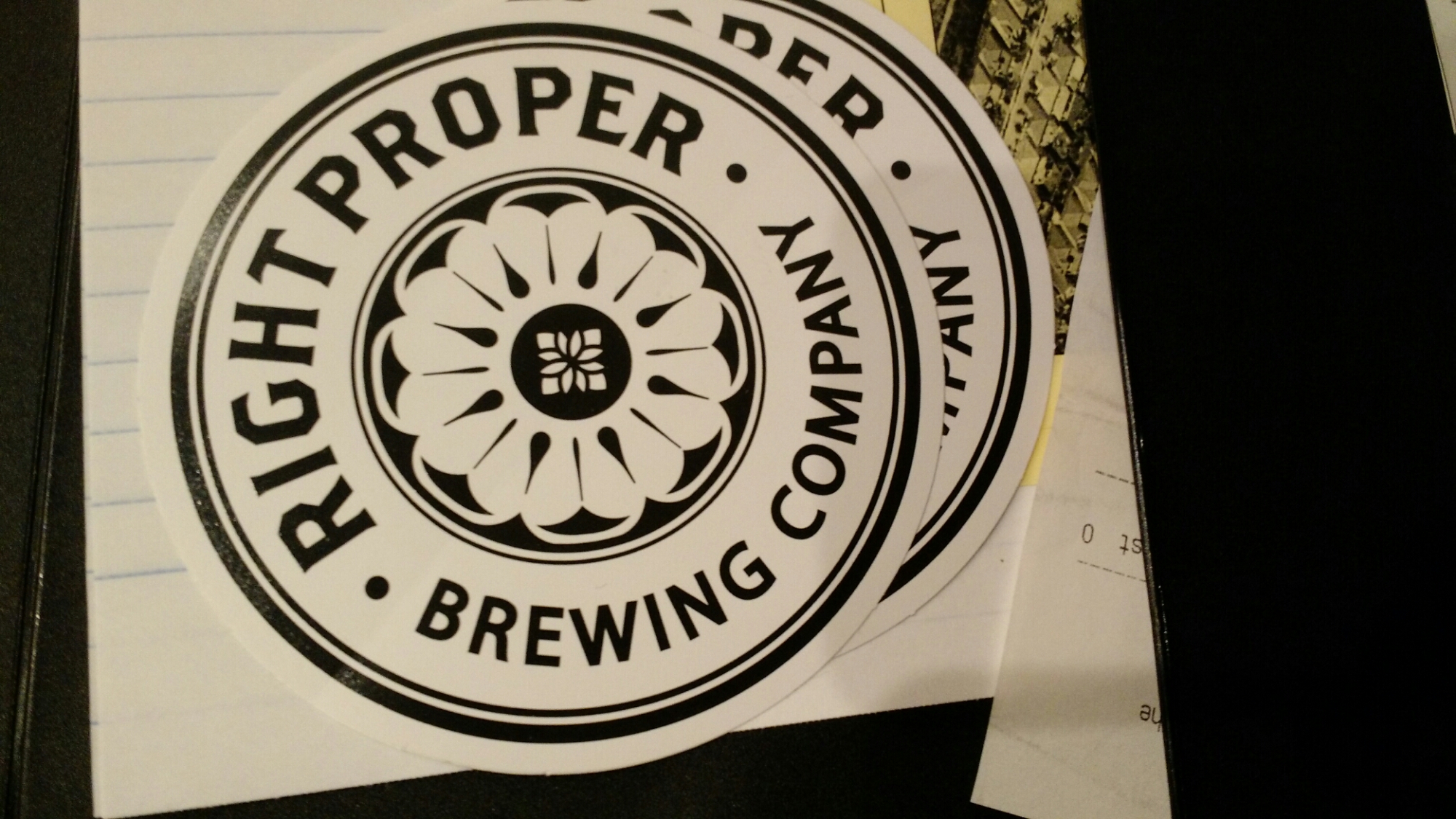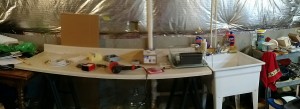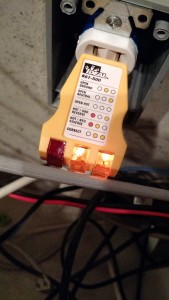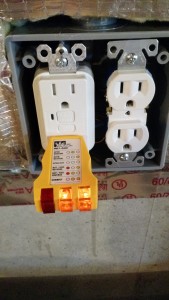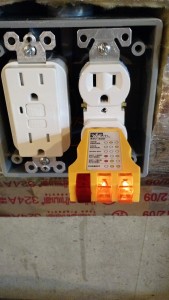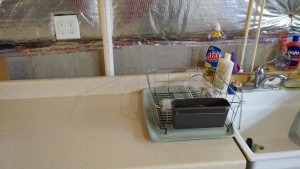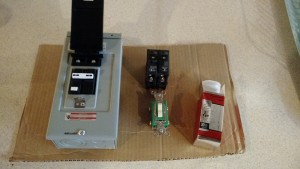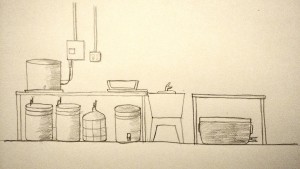Author Archive: Andrew
Some Kind of Race Report: Bockfest 5k
Not to be confused with the Bockhurt 5k.
Thanks to Old Man Winter and some rodent from PuxatawnICAN’TSPELLTHISDAMNCITY (both of whom should probably stay as far from my truck as possible!), I’ve been dealing with a lot of back pain for the past few weeks (from shoveling snow). I ran on the dreadmill once since the injury, and it was a successful run. Two days later, I ran in the snow and made it a half mile before searing pains in my back caused me to stop.
Running vs. walking was a race-day-decision for me, and my back felt good enough to run it. I should have walked.
My time was good – 26:28. Not a PR, but second best and considering the injury and I was going easy, I’m not complaining at all. The new course wasn’t as bad as I thought it would be. I thought it would be much harder going left onto Reading instead of right, but the hill isn’t that bad there (or maybe since I run up Gilbert all the time, I’m not phased by hills anymore). Also, the Flying Pig Crew did A LOT to ensure the course was snow free and they even had a volunteer yelling to runners about ice on the edge of the course between mile 2 and mile 3 to make sure nobody slipped.
SOAPBOX: if you do any run and you’re not going to run AT LEAST the first mile, DO NOT start in the front half of the pack. If you’re walking in the middle in the opening area of a race, you’re fair game to get run over by runners (and some of us aren’t exactly lightweights). Sorry not sorry.
After the finish, I grabbed my water and a banana and headed inside for beer. In the shitty picture below, one of the beers said “Bockfest Competition Winning Brew”. Needless to say, I got one of those. I also got a Red Hop Mess. Both were very good.
The medal was nice, too. They got away from the bottle opener design and went with ein Bock und ein Bier.
The unfortunate thing was Saturday afternoon and into the evening my back got worse. I shoulda walked. But now (on Monday), it’s much better and I should be back into my regular running cycle this week, just in time for Spring in Cincy.
Cheers!
PS: there’s a reason core routines exist.
Brewery Upgrade Phase 2
In the upgrade process, phase 2 is running the 240V line to run the heating elements. This is a hard post to make exciting, because it’s basically all about a wire. And at one time after reading about the death of craft beer on some linkbaitey website (damn you Gose!!! :-D), I thought that I should only make posts that are informative or truly funny, and occasionally respectfully opinionated.
This post is about a boring orange wire.
IMPORTANT NOTE: NOTHING IN THIS IS ADVICE OR A HOW-TO. The voltages involved with an electric brewery are extremely dangerous, and doing things wrong can result in FIRE or DEATH (and it will hurt like Hell the entire time you are dying).
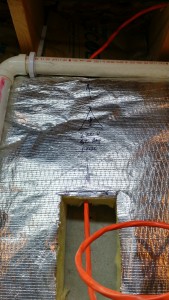
A boring hole with a wire. I couldn’t get conduit behind the drainpipe above, and that drainpipe is NOT getting moved, so I wrote on the insulation that there is a wire there.
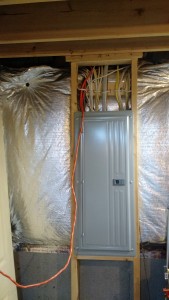
And… a wire. It’s pulled down near the circuit breaker panel in preparation to be run in the panel to a breaker.
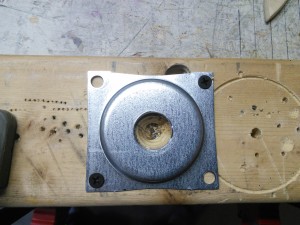
I sometimes have good ideas. Like bolting this piece down to a scrap piece of 2×4 to drill it for a cable connector.
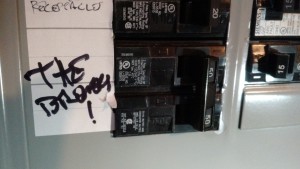
Around this point, I shut off the power and installed the 50-amp breaker.
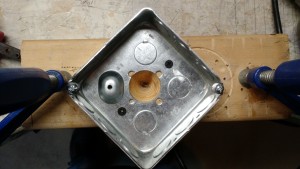
Drilling the enclosure for the side of the kettle.
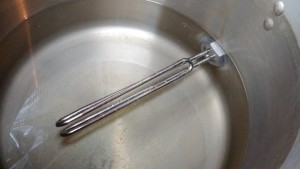
Installed heating element. This took three or four tries to get it installed, and ultimately the wrong washer was the one that came with it and the correct one was a red 1 11/16 o-ring I bought from Amazon.
After this, I decided to turn things on. Unfortunately, I was greeted with a shit ton of sparks.
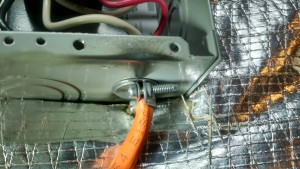
Bottom side of sparks.
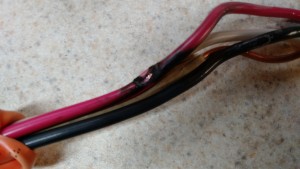
After shutting stuff down and looking into WHY I had a little explosion, I found that I must have pulled the cable too tight and sliced into one of the hot wires. When it connected to ground… BOOM.
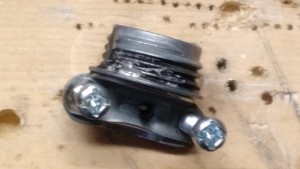
This is the strain relief that the cable was sliced through. This did come right out, fortunately, as the heat from the arcing was enough to do some damage to the threads. Had it been longer, it could have welded in place.
While a large part of this post was quite boring (seriously, it’s a wire!), I’m really excited about it. Not the wire (even I think the wire’s pretty darn boring), what will happen when I get the rest of the stuff wired in and I can brew beer in the basement.
Cheers!
Playing with a PID
In the process of building the electric kettle, I bought a PID (proportional-integral-derivative) controller to control the kettle temperature. Since this came from Amazon and had Chinglish directions, I figured I should get it out of the box and test it.
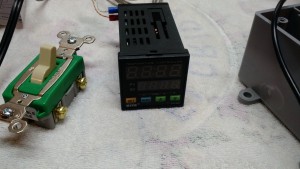
The Controller
The controller is a little 1.75″ x 1.75″ (45mm x 45mm) square. The screen has two displays, one for the temperature, one for the set point. There are also four buttons, SET, <<AT, up, and down.
I threw together a setup that has a switch (in this case, a double-pole switch built for 220V 45A), a plug, and the PID.
Initially, the PID is setup in Centigrade. You can change it by holding down ‘set’ for a few seconds and then pressing it until you see a C F in the upper screen and using <<AT and up or down to change it from C to F.
The output is 24 VDC. There is also an alarm that is basically a switch (normally opened, closed during an alarm condition). The set includes some slip brackets (that’s probably not the proper name) to mount it in a box.
The issue I ran into with this is that the thermocouple is a less-common thread size – I don’t have the correct size nut and my tap set doesn’t have the correct size, either. I did find the right size at the hardware store (a 6mm nut).
I also had to find the right locknut for the heating element. Apparently, this is standardized to a 1″ nut, and they run less than $4 at Grainger.
So the next post should include something about getting this running in sort of a basic semi-usable and somewhat unsafe configuration. I’m sure my 50 amp spa panel will be part of things, as well as the switch I used above, and the PID controller of course. However, the PID controller won’t be controlling anything until I get the solid state relay. That’s probably stuck in the harbor outside of Long Beach; fortunately it shipped a few weeks before the Chinese New Year, and you really only need a few days (if that) for it to leave China and not be affected by the holiday. So the delay is all on Long Beach.
In the meantime, I ordered a pair of SSRs to be shipped from Georgia. Which will probably arrive next Monday.
Cheers!
Friend of Hades IPA Recipe
So I’m starting to experiment with different malts. I started looking into various SMaSH recipes and started seeing people use different base malts. So I decided to base this one on Vienna malt instead of the normal 2-row malt. I also added some carared for color, some carapils for head retention, and crystal 40 for a touch of sweetness and color. I also kicked up the hops quite a bit since my last (extract+partial mash) IPA. The last (also first) IPA I brewed had 7oz of hops (3 oz of Cascade, 2 oz of Citra and Galaxy). This time, I added an extra 3 oz of hops. I also experimented with first wort hopping and steeping (the closest I can get to hopstanding right now).
Here is the recipe.
Recipe Details
| Batch Size | Boil Time | IBU | SRM | Est. OG | Est. FG | ABV |
|---|---|---|---|---|---|---|
| 5 gal | 60 min | 67.7 IBUs | 11.5 SRM | 1.066 | 1.015 | 6.7 % |
| Actuals | 1.051 | 1.01 | 5.4 % | |||
Style Details
| Name | Cat. | OG Range | FG Range | IBU | SRM | Carb | ABV |
|---|---|---|---|---|---|---|---|
| American IPA | 14 B | 1.056 - 1.075 | 1.01 - 1.018 | 40 - 70 | 6 - 15 | 2.2 - 2.7 | 5.5 - 7.5 % |
Fermentables
| Name | Amount | % |
|---|---|---|
| Vienna Malt | 9 lbs | 69.23 |
| Carared | 2 lbs | 15.38 |
| Cara-Pils/Dextrine | 1 lbs | 7.69 |
| Caramel/Crystal Malt - 40L | 1 lbs | 7.69 |
Hops
| Name | Amount | Time | Use | Form | Alpha % |
|---|---|---|---|---|---|
| Cascade | 0.5 oz | 15 min | First Wort | Pellet | 6.6 |
| Cascade | 0.5 oz | 60 min | Boil | Pellet | 6.6 |
| Cascade | 0.5 oz | 15 min | Boil | Pellet | 6.6 |
| Citra | 0.5 oz | 15 min | Boil | Pellet | 12 |
| Galaxy | 0.5 oz | 15 min | Boil | Pellet | 11 |
| Cascade | 0.5 oz | 5 min | Boil | Pellet | 6.6 |
| Citra | 0.5 oz | 5 min | Boil | Pellet | 12 |
| Galaxy | 0.5 oz | 5 min | Boil | Pellet | 11 |
| Cascade | 1 oz | 15 min | Aroma | Pellet | 6.6 |
| Citra | 1 oz | 15 min | Aroma | Pellet | 12 |
| Galaxy | 1 oz | 15 min | Aroma | Pellet | 11 |
| Cascade | 1 oz | 7 days | Dry Hop | Pellet | 6.6 |
| Citra | 1 oz | 7 days | Dry Hop | Pellet | 11 |
| Galaxy | 1 oz | 7 days | Dry Hop | Pellet | 11 |
Miscs
| Name | Amount | Time | Use | Type |
|---|---|---|---|---|
| Irish Moss | 0.25 tsp | 15 min | Boil | Fining |
Yeast
| Name | Lab | Attenuation | Temperature |
|---|---|---|---|
| American Ale (1056) | Wyeast Labs | 75% | 60°F - 72°F |
Mash
| Step | Temperature | Time |
|---|---|---|
| Mash In | 152°F | 60 min |
Download
| Download this recipe's BeerXML file |
Some pics from brewday, all courtesy of Instagram and me being bored:
- First time using First Wort Hops
- Waiting on boil. I need to check my propane burner’s oxygen inlet.
- Mashing in.
- Boiling
The flavor is just what I wanted. A citrus hop rollercoaster. It pours a deep copper color with a thin head. The aroma is mostly orangey (is that a word?). The taste is smooth, very citrusy that lasts for a while. At 67.7 IBU, it’s at the top of the style range, which is pretty much where I wanted it (I looked up the IBU on PsycHOPathy and Truth, both are just over 70). I love it.
Looking at Beer Competitions
I looked into a few homebrewing competitions. I think I mostly wanted to look at how big the categories are.
Data
The data I found is from the National Homebrewing Competition, the Indiana State Fair, and the Ohio State Fair. Only partial datasets were used from the state fairs, because not all the data I need is on their websites. This data is far from perfect, but I think the conclusions I make below are still valid.
Growth
As shown above, there has been a lot of growth in the National Homebrew Competition. From 2009 to 2012, it grew by 50% and by 2014 it grew even more. The states did not show any growth. We’re in a golden age of homebrewing where the Internet helps new homebrewers along, a craft beer surge that shows everyone that not all beer is a Light American Lager. I think this has helped increase the NHC.
Bud’s crack on craft brewing will likely help homebrewing as well as craft beer. After all, 44% of drinkers age 21-27 have never tasted it. Not sure if they’ve had a craft beer either, though (they could be wine or whiskey drinkers).
Styles
I visually looked through to see the top five and bottom five. I didn’t do any actual analysis other than that.
Top 5: American Ale, IPA, Stout, Belgian and French, and Belgian Strong
It is probably expected that American Ales and IPAs would be big styles. I think a lot of people that ‘stick their foot in’ to craft beer start with amber or pale ales and probably soon make it to IPAs. After being in the hobby for 6 months, I’m not shocked to see strong numbers from Stout – it seems like the non-hop-head craft beer lovers gravitate towards good stouts. Also, Stout allows for some flexibility with ingredients without becoming something not-beer. I’m also not shocked to see Belgian and French, and Belgian Strong classes represented well, as many of the homebrewers I know have a profound interest in those two classes (specifically in saisons, tripels, and quadrupels).
Bottom 5: Amber Hybrid, Strong Ale, Sour Ale, Euro Amber Lager, and Dark Lager
Amber Hybrid (which includes Northern German Altbier, Dusseldorf Altbier, and California Common) is one I would have expected to be higher, although that is mostly because of the California Common style. BYO Magazine recently did a feature article on this, perhaps we’ll see some growth there. As far as altbier, I’m not sure my three local bottle shops have any altbier that would be within these styles. I don’t know about others, but I’d sure be apprehensive of brewing a style I’ve never tasted.
Strong Ale was a little shocking. I expected more people to use barleywine to show off malt selection.
I didn’t think it was shocking that sour ale was among the bottom, but maybe that’s because I find them intimidating from the brewing standpoint.
I was shocked to see both the Euro Amber Lager and Dark Lager among the bottom five. These two style groups include some of my favorites in the lager kingdom, Oktoberfest and Schwarzbier.
From my point of view on one of the hills east of Cincinnati, though, I am partially not shocked about all but one of the bottom 5 being lagers. According to the temperature on my ale pail, fermentation holds around 64-66 degrees (Fahrenheit, 18-19 Celcius) in my basement with no temperature control. Perfect for ales, not so much for lagers. I eventually will brew some lagers, but I have to have better temperature control first.
An interesting contrast in the styles is the light hybrid group. Apparently this is pretty common in the midwest, but not nationally – it’s pretty low for NHC, but pretty high for both the state fairs. This includes cream ale, blonde ale, Kolsch, and american wheat or rye. My only guess here is that we have a local soft spot for Little King’s Cream Ale.
Growth and Losses
I looked at this by looking at the slope of the trend based on the NHC data.
The biggest growth style classes are IPA, American Ale, Stout, Belgian and French Ale, and Spice, Herb, and Vegetable Beer. I don’t find any of these shocking except the spice, herb, and vegetable class.
The losing classes are all meads. I’m not sure what to think of that. On one hand, it isn’t uncommon to find a homebrewer that is at least interested in fermenting mead. On the other hand, good honey is incredibly expensive, and that may factor into things.
The not-really-growing classes are Pilsner, Specialty Cider & Perry, German Wheat & Rye, Light Lager, and Standard Cider & Perry. Regarding cider and light lager, I’m not shocked. While I don’t think the hobby is bent against ciders, perries, and light lagers, I think there is a segment of beer drinkers that look on those three groups as being inferior. I don’t agree with them (and I have a cider experiment going on in the basement now), but I think it exists.
That leaves Pilsner and German Wheat & Rye as the odd men out. I’m not sure why, as every beer geek worth his (or her) glass knows that Pilsner is different from Light Lager (and generally regarded as far better). Perhaps it has to do with the difficulty in water chemistry and fermenting. Regarding German Wheat and Rye, I don’t know. It’s not among my favorite styles, but that doesn’t really mean anything to others.
So What’s This All Mean?
Nothing. Nada. Jack Shit. I’m a data geek in real life and wanted to look into this. Awards don’t matter, your taste does. Brew what you like, because if you come in from work and look forward to opening another homebrew, you’re doin’ it right.
…but I understand if you still want to win an award (I do). It’s kinda like getting a medal at the end of a (running) race. The medal symbolizes the work that went into training for that event. Similarly, a beer award symbolizes the work put into formulating and executing a recipe.
Cheers!
Oatmeal Recipe: Blueberry-Cinnamon-Brown Sugar
Wow, a rare running post on RunningOnBeer.net!
I’m trying to get off my kick of eating cherry Pop-Tarts, a wonderfully tasting processed food. So I had my wife buy me some plain oatmeal. Plain. No flavor. She also bought some blueberries for me. So I decided to make it edible.
Blueberry-Cinnamon-Brown Sugar Oatmeal
1/8 tsp Cinnamon
2 tsp Brown Sugar
A few sprinkles of salt
Small handful of frozen blueberries
1 pack Quaker Instant Oats – plain. No flavor.
Mix oatmeal according to package directions, add sugar, spices, and blueberries. Microwave for the highest time on the package. Stir. Eat. Enjoy. Feel free to adjust anything above to taste.
This will do well to pull me off the processed jelly-filled goodness of cherry poptarts.
Cheers!
Radio Red Ale
I brewed my best beer so far – a subtly hoppy amber ale. This is the beer I’m going to enter into the Cincinnati Malt Infusers competition. It came out well – I can’t stop drinking it, and I can’t stop thinking about different things I want to try with the recipe. Of course I need to brew more of this as I can’t stop grabbing it out of the fridge.
Recipe
Recipe Details
| Batch Size | Boil Time | IBU | SRM | Est. OG | Est. FG | ABV |
|---|---|---|---|---|---|---|
| 5 gal | 60 min | 36.5 IBUs | 13.0 SRM | 1.058 | 1.016 | 5.5 % |
| Actuals | 1.046 | 1.01 | 4.7 % | |||
Style Details
| Name | Cat. | OG Range | FG Range | IBU | SRM | Carb | ABV |
|---|---|---|---|---|---|---|---|
| American Amber Ale | 6 B | 1.045 - 1.056 | 1.01 - 1.015 | 20 - 40 | 11 - 18 | 2.3 - 2.8 | 4.5 - 5.7 % |
Fermentables
| Name | Amount | % |
|---|---|---|
| Pale Malt (2 Row) US | 10 lbs | 88.89 |
| Caramel/Crystal Malt - 40L | 1 lbs | 8.89 |
| Roasted Barley | 4 oz | 2.22 |
Hops
| Name | Amount | Time | Use | Form | Alpha % |
|---|---|---|---|---|---|
| Centennial | 0.75 oz | 60 min | Boil | Pellet | 9 |
| Centennial | 1 oz | 15 min | Boil | Pellet | 9 |
| Citra | 1 oz | 7 days | Dry Hop | Pellet | 12 |
Yeast
| Name | Lab | Attenuation | Temperature |
|---|---|---|---|
| American Ale (1056) | Wyeast Labs | 75% | 60°F - 72°F |
Mash
| Step | Temperature | Time |
|---|---|---|
| Mash In | 156°F | 88 min |
Download
| Download this recipe's BeerXML file |
Recipe licensed under the Creative Commons “by-nc” license.
Taste and Stuff
I love the flavor. I love the citrus hop flavor coming through. The beer has a great head and lacing. My only concern (from a competition standpoint) is the color is a little darker than I expected, and I think I will get dinged for it. I am very happy with the clarity of the beer, though, as my second brew and only partial mash beer was an IPA that tasted great but was very cloudy. This is pretty clear.
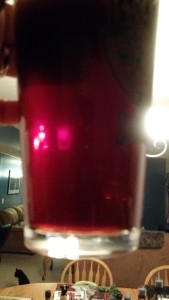
Not the greatest picture artistically, but good to show the clarity and color. It does have a red hue.
Prost!
Seeking the Source
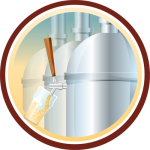
I’m not very secretive about being new to homebrewing. And I’ve not had every type of beer, and each brewer (frequently) puts their own spin on things. Going to breweries is a nice way to get rare, unreleased, difficult to find, or beers that you wouldn’t buy in a large pack (e.g. from a style you don’t normally like). It also gives me a chance to develop my palete further (definitely a good thing), and remain part of the craft beer revolution that is happening.
I’ve visited a handful of breweries, and I’m trying to be better to seek out new, interesting, and local beers when I go out of town. Last October, I happened to be in Atlantic City and Tun Tavern is hooked onto a hotel that will be holding a conference I’m involved with. I was only in Atlantic City for two nights, and one of them had a (prearranged) dinner at a chain restaurant where the best beer on the menu was Yuengling (I guess it could be worse). So fortunately I made it there. It’s just a shame I didn’t take more than one picture. I found their flavors interesting, and fortunately not in a bad way.
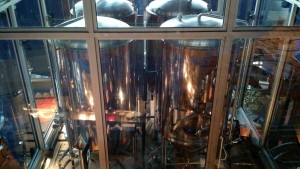
My lone pic of Tun Tavern from a second floor window. And the poor pic does not do their beer justice.
During the week prior to Christmas, I made it out to Listermann Brewing, courtesy of my awesome staff giving me a gift card there (it’s going to be worth their while!). Prior to making it out there, I had two beers by Listermann (and both were prior to really knowing what I was getting). One was a Scottish Ale. Which is too malty for my tastes. The other was Chicow!, which was also too sweet for me. However, in going to their brewery, I was able to get four beers that I had never had before, 562, Batch 300, Piquant, and Nutcase Peanut Butter Porter. Not only did I find these beers to be quite good, but also very interesting as the flavors (particularly in Piquant and Nutcase PBP) were different from what I’ve had before. It made it worth the trip. My only regret is not getting a few pics, but I’ll be back – I still have around $0.23 left on that gift card and I KNOW I’ll need something soon (and of course I’ll try a few others while I’m there).
After Christmas, I made it out to 50 West Brewery. They have the best brewery food that I’ve ever had hands down. My wife and I had brunch, and both meals (the country fried steak and the biscuits and gravy) were EXCELLENT. I wasn’t a huge fan of all their beers – it seems the summit hops they use are not my favorite. However, their Mooving Violation is a great stout that goes well with their brunch (or without their brunch, but personally I’d recommend the brunch).
Also after Christmas, I went over to Old Firehouse Brewery in Williamsburg. I should drop by here more often because it is not far from where I live. They have some excellent beers on tap. My only regret is not leaving with a howler of Probie Porter to go with the growler of Code 3 Red. OFB has a Gose beer on tap, and that was the first time I had anything in that style. It’s very good and would pair well with a warm summer day.
So fast forward two weeks to my annual DC trip. I found a reception at Right Proper Brewing Company. I looked at their website and found one beer out of four listed I was interested in – a Saison (their website has been updated since then). When I got in there, they had a great list of beers. I drank both of the Saisons they had on the menu as well as their porter – all were very good!
I visited one other brewery (well, brewpub) in DC while I was there, the Capital City Brewing Company. The beer was good, the food was good, service was a little slow, and I didn’t take any pictures. Regardless, I got to drink a beer I wouldn’t have otherwise (and I might be back to try more). DC is a yearly thing for me, so next year’s plan includes a trip to DC Brau.
Cheers to more visits!
Brewery Upgrade Phase 1
I did the first phase of upgrades. This wasn’t a whole lot of work, but after spending quite some time at the hardware store, it was enough to cap off the rest of a day.
So the first part was an outlet somewhere near the brewing area. I’ve never actually needed an outlet for brewing, but the counter sometimes serves other purposes (my food dehydrator, for example), so having some outlet space is useful. Plus, if I want to plug in a radio, my phone, or something like that, I don’t want to run an extension cord across the basement. Safety first and all that!
DISCLAIMER: I am not an electrician. What I’m documenting here is a result of research mixed with a little bit of theoretical knowledge and some experience. This is not a guide or how-to on how to do this.
So extending the outlet isn’t difficult. Black to brass, silver to silver, and bare to bare. Running it is a pain, but hooking up wires is easy. Testing is easy.

Sometimes twice (note the GFCI light is on, I pressed the test button and wanted to ensure that the other outlet was actually protected)
That was the first part of the improvements. The second part was another outlet, but this one was for a light. I tied it into a light socket nearby.
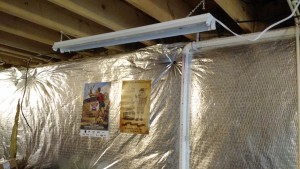
The finished light, sans bulbs (they didn’t come with the kit). This will operate with the switch to turn on all the basement lights.
So that’s phase 1.
Stay tuned for phase 2
Cheers!
New Brewing Setup Plan
After the last beast of a brew day, I want to fix my setup to make the next brew (soon, hopefully) easier. I don’t need all the fancy-pants pumps and stuff, but I do need a good way to heat water quickly and safely. Convenience is pretty important to me as well, so I’m not going to brew in my garage (no sink and poor electrical and poor lighting).
So I drew (literally) my plan.
This is a plan in four phases, and since I’m looking for content, I’m going to have a post for each phase.
Phase 1: 120v Upgrades This is minor upgrades to the electric at my brewing area including an outlet at the brewing station and a better light.
Phase 2: 240v Wiring This is the major part of the wiring. I’m not afraid of electricity at all (I’ve been shocked a few times), but I do take care (which is probably why those shocks weren’t enough to kill me).
Phase 3: Control Box Since I don’t have hundreds or thousands of dollars sitting around, I’m making my control box myself.
Phase 4: Finish Up and Testing I’m not doing all this stuff for my health! There’s a few things that will have to be added in, like a pump. Realistically, I’m going to need to another kettle, too, but that will be a while.
Cheers!
